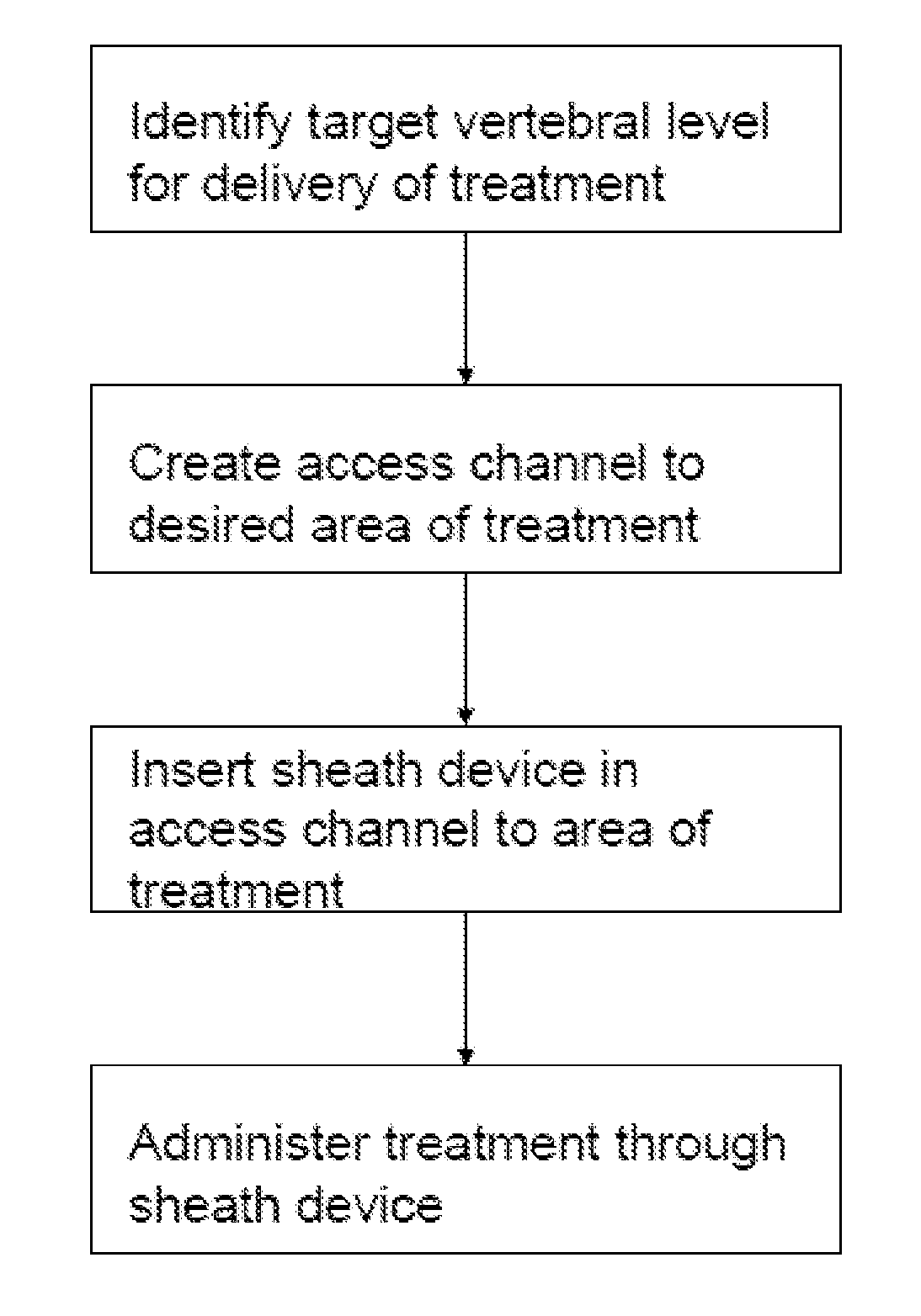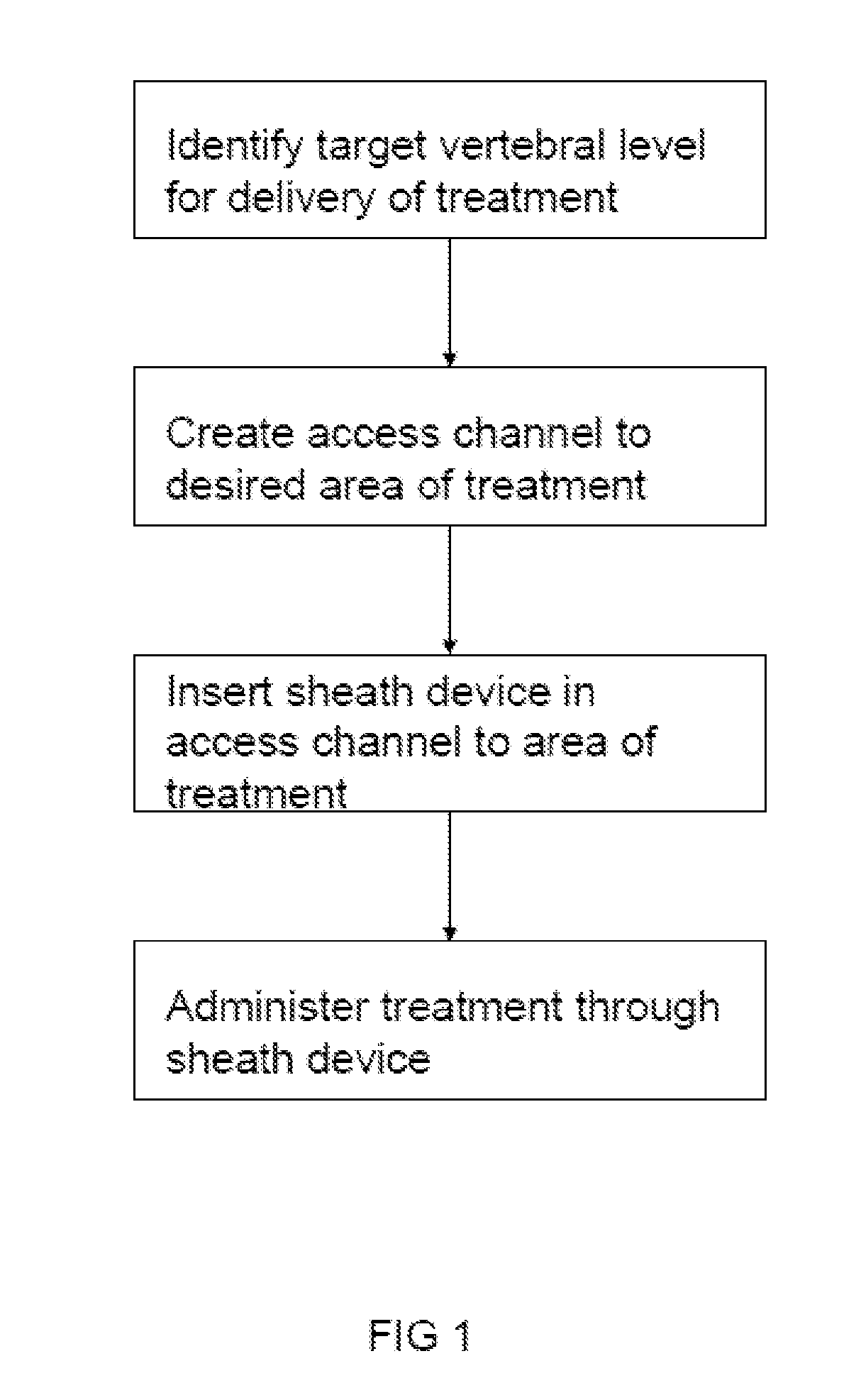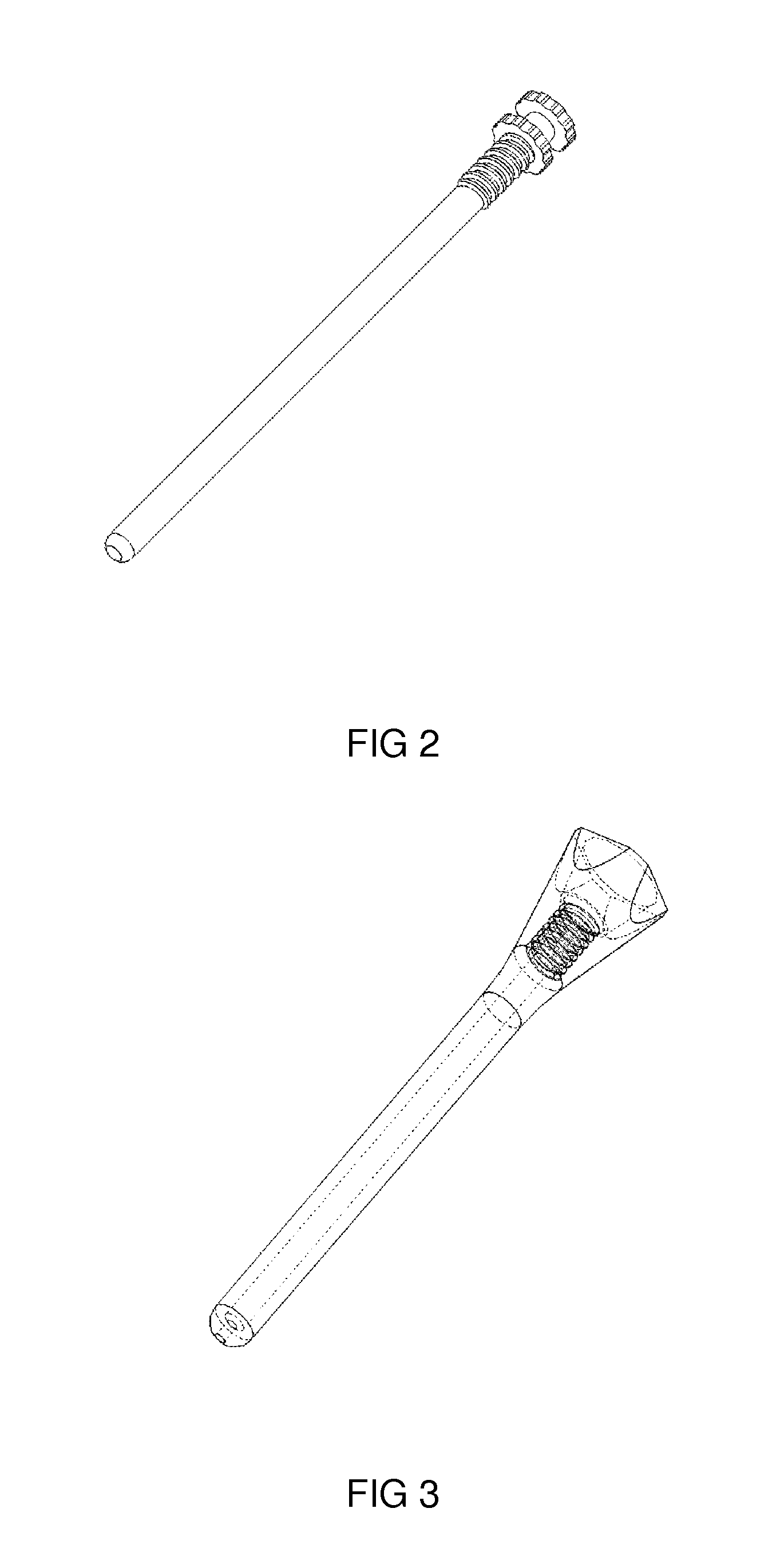Radiation/Drug Delivery Method and Apparatus
a technology of radiotherapy and drug delivery, applied in the direction of radiation therapy, therapy, etc., can solve the problems of inability to accurately place seeds, lack of precision in positioning seeds, and inability to use sutures in deep tissues, etc., to achieve effective delivery, facilitate multiple treatment sessions, and minimal invasive
- Summary
- Abstract
- Description
- Claims
- Application Information
AI Technical Summary
Benefits of technology
Problems solved by technology
Method used
Image
Examples
example 1
[0082]The invented method will first entail locating the insertion point to the desired area of treatment. Placing the patient in an appropriate position, the clinician can use a C-arm to identify the appropriate vertebral body or bony tumor location in the desired entry point into the pedicle, vertebral body or bone.
[0083]Next, a physical channel to the tumor treatment area needs to be created. There are many methodologies known in the art for creating such a channel. Each method has its respective advantages. Accordingly, it will be apparent to the physician that the choice of such methods will depend upon the nature and path of the channel to be created.
[0084]For example, utilizing a cannulated or non-cannulated jam sheedy or other appropriate instrument, the clinician can advance the instrument into the vertebral body placing its tip in the desired location relative to the tumor. In the event a cannulated needle is used, the trocar will be removed from the needle. In another exe...
example 2
[0085]After the hole has been expanded, if the bone cannula has the aforementioned opening in the end or the long tube style is used, the cannula can be delivered over the k-wire or a drill or pedicle finder and the k-wire will be removed and the bone cannula can be advanced into the cavity that has been created. A balloon catheter can then be advanced into the bore in the bone cannula and the therapeutic entity can be delivered to the desired tumor location in the appropriate dosage. In the event that serial therapy should be desired prior to removal of the cannula, appropriate wound care management should be provided during the period that the bone cannula remains in the patient. In the event that serial therapy should occur over a several day period, a catheter may be removed and replaced with a trocar that is positioned within the bone cannula followed by appropriate wound closure techniques. Upon the next desired treatment session, a k-wire may be used to re-introduce the dilat...
PUM
 Login to View More
Login to View More Abstract
Description
Claims
Application Information
 Login to View More
Login to View More - R&D
- Intellectual Property
- Life Sciences
- Materials
- Tech Scout
- Unparalleled Data Quality
- Higher Quality Content
- 60% Fewer Hallucinations
Browse by: Latest US Patents, China's latest patents, Technical Efficacy Thesaurus, Application Domain, Technology Topic, Popular Technical Reports.
© 2025 PatSnap. All rights reserved.Legal|Privacy policy|Modern Slavery Act Transparency Statement|Sitemap|About US| Contact US: help@patsnap.com



